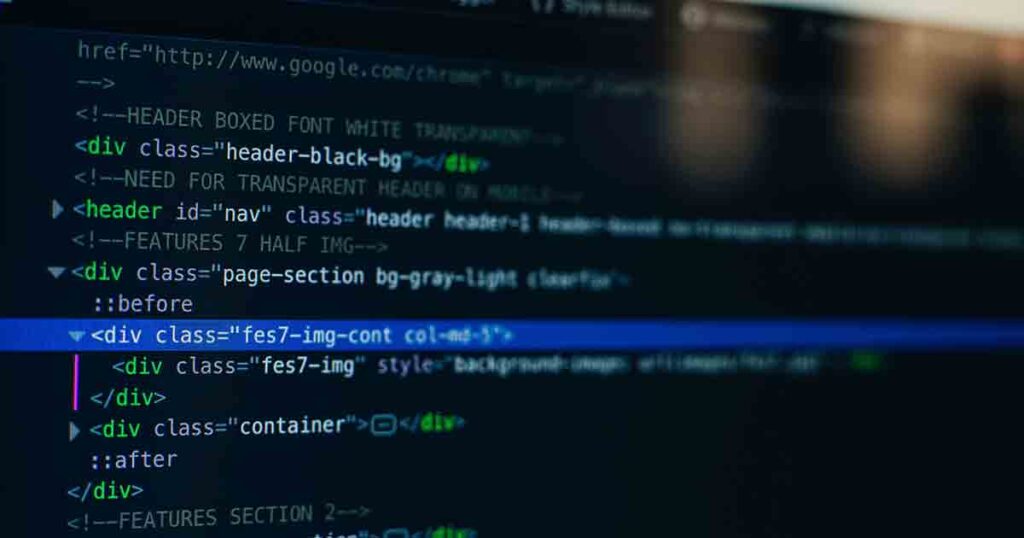Role of CSS in Web Programming

What is the Role of CSS in Web Programming?
Role of CSS in Web Programming
CSS, or Cascading Style Sheets, plays a vital role in web programming by controlling the appearance and layout of web pages.
It works with HTML and JavaScript to create visually appealing and interactive websites.
This article will examine the different facets of CSS and its impact on web development.
Introduction to CSS
CSS is a language for style sheets used to define an HTML document’s visual appearance.
It separates the content of a web page from its visual representation, making it easier to maintain and update the design of a website.
With CSS, web developers can control a webpage’s fonts, colors, layouts, and other visual aspects.
CSS Syntax and Structure
CSS uses a simple syntax and structure. Styles are defined using selectors and declarations.
Selectors target specific HTML elements, while declarations define the properties and values to apply to those elements.
CSS can be written inline within HTML, embedded in the <style> tag, or included in an external CSS file.
Selectors and Styles
Selectors allow developers to target specific HTML elements and apply styles to them.
Several types of selectors exist, such as element selectors, class selectors, ID selectors, and attribute selectors.
Styles define the visual properties such as font, color, background, padding, and margin applied to the selected elements.
Cascading and Specificity
CSS follows the cascading principle, where multiple styles can apply to an element, and their order of precedence determines the final appearance.
Specificity is a concept that determines which style rule takes precedence when multiple rules target the same element.
Understanding specificity is crucial for managing the styling of complex web pages.
Box Model and Layout
The box model is a basic principle in CSS that determines how elements appear on a web page.
It visualizes each element as a rectangle with four components: content, padding, border, and margin.
Understanding the box model is essential for controlling the spacing and positioning of elements and creating well-structured layouts.
Responsive Design with CSS
Responsive design has become crucial in the era of mobile devices and varying screen sizes.
CSS provides techniques such as media queries and flexible units that allow developers to create websites that adapt to different devices and screen resolutions.
Responsive design ensures that web pages look and function well across various platforms.

CSS Frameworks
CSS frameworks are pre-written CSS code libraries that provide a set of predefined styles and layouts.
These frameworks simplify web development by offering ready-to-use components and grids, accelerating the building of responsive and visually appealing websites.
Popular CSS frameworks include Bootstrap, Foundation, and Bulma.
CSS Preprocessors
CSS preprocessors such as Sass, Less, and Stylus enhance the capabilities of CSS by introducing features like variables, nesting, mixins, and functions.
These preprocessors allow developers to write more efficient and maintainable CSS code.
Preprocessors must be compiled into regular CSS before being used on web pages.
CSS Animations and Transitions
CSS provides powerful animation and transition capabilities, allowing developers to create visually dynamic and interactive elements.
Through keyframes, transitions, and animations, CSS creates engaging user experiences by animating properties such as position, size, color, and opacity.
CSS3 and Advanced Features
CSS3 introduces a wide range of advanced features and modules that expand the possibilities of CSS.
These include advanced selectors, gradients, shadows, transformations, and flexible box layouts.
CSS3 empowers developers to create sophisticated designs and effects without relying on images or JavaScript.
Best Practices for CSS
To ensure maintainable and efficient CSS code, following best practices is essential.
These include organizing CSS files, using meaningful class and ID names, minimizing redundancy, leveraging shorthand properties, and optimizing CSS delivery.
Adhering to best practices improves code readability, easier maintenance, and better performance.
Cross-Browser Compatibility
Different web browsers may interpret CSS code differently, leading to inconsistencies in the appearance of web pages.
Cross-browser compatibility testing is crucial to ensure the website looks and functions as intended across popular browsers such as Chrome, Firefox, Safari, and Internet Explorer.
CSS prefixes and vendor-specific properties are often used to handle browser-specific implementations.
SEO and CSS
CSS indirectly affects search engine optimization (SEO) by influencing website usability, page load speed, and mobile-friendliness.
Well-structured CSS and optimized code contribute to improved user experience and faster page rendering, which are factors search engines consider when ranking websites.
Performance Optimization
Efficient use of CSS can significantly impact the performance of a website.
Techniques such as minification, compression, caching, and reducing the number of HTTP requests help optimize CSS delivery.
Avoiding excessive CSS code, optimizing images, and using modern CSS features can lead to faster load times and better overall performance.
Conclusion
CSS is essential to web programming, controlling web pages’ visual aspects and layout.
It allows developers to create attractive, responsive, and interactive websites.
Developers can build well-structured and optimized CSS code by understanding CSS syntax, selectors, specificity, and advanced features.
Remember to follow best practices, ensure cross-browser compatibility, and consider the impact of CSS on SEO and performance.
FAQs (Frequently Asked Questions)
1. Why is CSS important in web programming?
CSS is crucial in web programming as it allows developers to control the appearance and layout of web pages, ensuring a visually appealing and user-friendly experience.
2. Can I use CSS without HTML?
CSS works with HTML. While it’s possible to use CSS independently, its primary purpose is to style and format HTML elements.
3. What are CSS frameworks?
CSS frameworks are pre-written CSS code libraries that provide ready-to-use styles and layouts, making web development more efficient and faster.
4. Is CSS3 widely supported by all browsers?
While most modern browsers support CSS3 features, older versions may have limited support.
It’s essential to consider cross-browser compatibility when using CSS3.
5. How does CSS affect website performance?
Efficient use of CSS, including minification, compression, and reducing HTTP requests, can significantly improve website performance by reducing load times.



